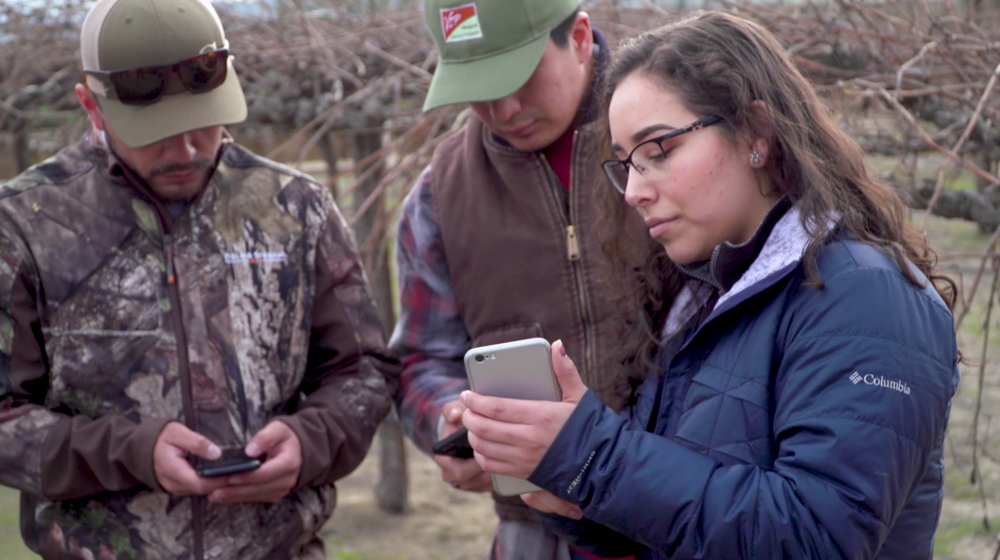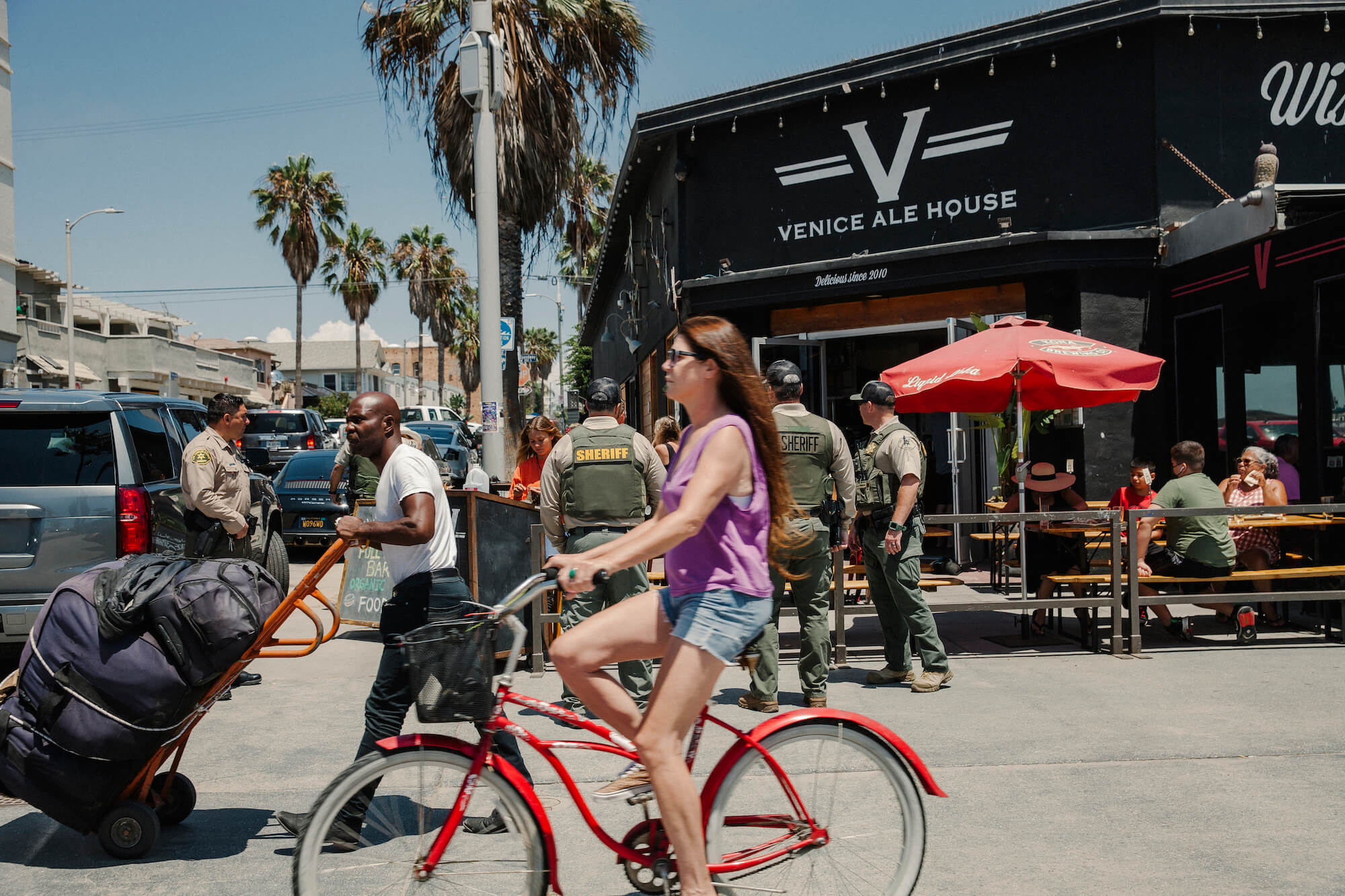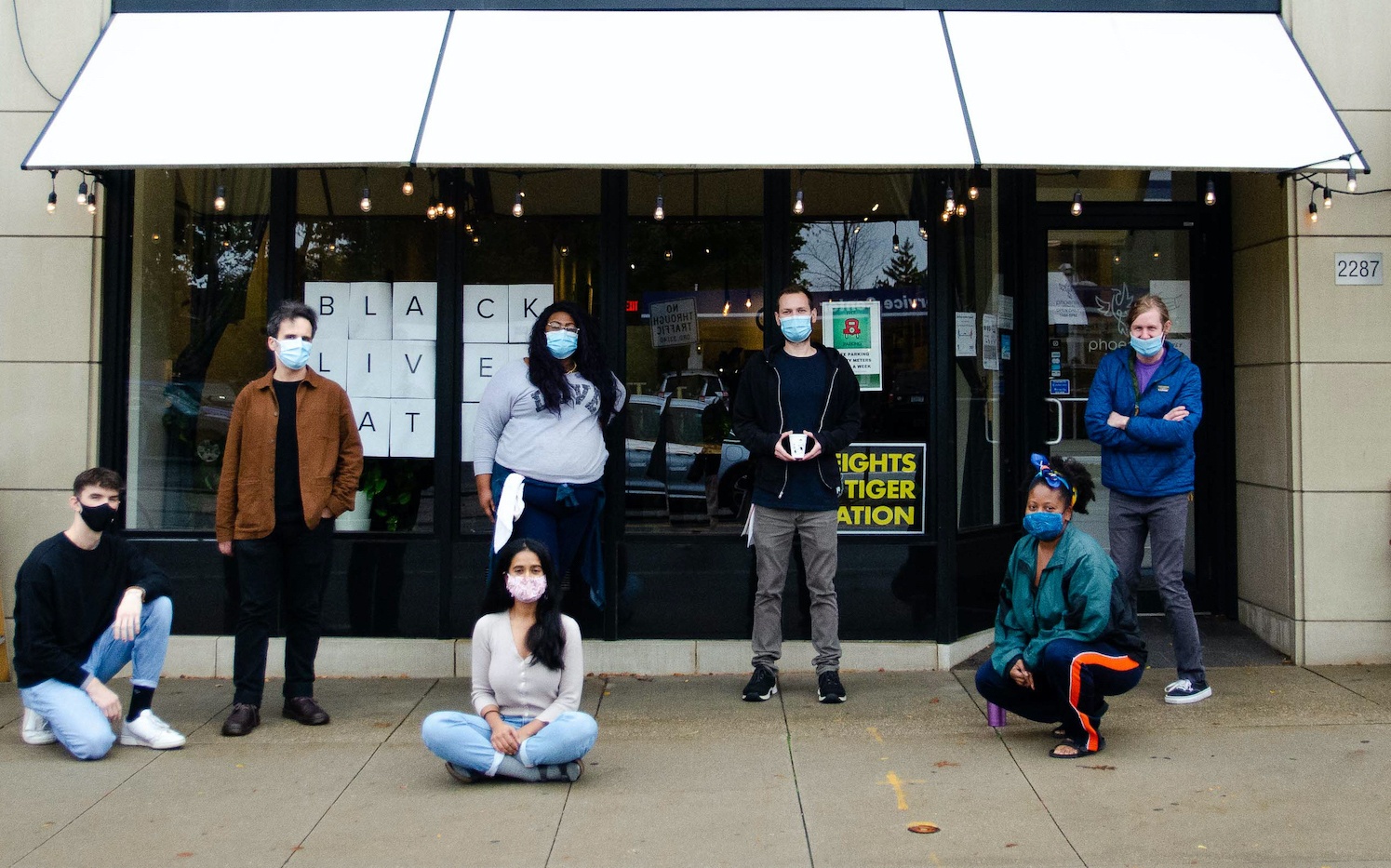“Investment crowdfunding” allows anyone to become a bargain-bin venture capitalist, helping restaurants finance their recoveries and growth.
In late 2020, Neil Blazin made the decision to update operations at his Pittsburgh pizzeria, Driftwood Oven. His timing, however, wasn’t great. The pandemic’s second wave was looming, with cases rising and Pennsyvlania seeing record-breaking daily deaths by mid-December; banks were drowning in paperwork for Small Business Administration guaranteed loans; large private investors had disappeared. The chef-owner decided to raise at least $60,000 from those who had a vested interest in his success: neighborhood customers.
This wasn’t Blazin’s first time crowdfunding. In 2017, when he and his former business partner needed help financing the pizzeria’s brick-and-mortar opening, they launched a Kickstarter campaign, bringing in over $44,000 in exchange for t-shirts, pizza, and pie-making workshops. But this time Blazin went with a platform called Honeycomb Credit, one he described as offering a “grown-up” version of crowdfunding: He promised to pay back his investors over five years, and to provide a return on their investment, at 8.5 percent annual interest. In less than two weeks, 70 people put their money where their stomachs are, and chipped in the maximum investment total of $150,000. Several more clamored, albeit unsuccessfully, to get in afterward.
“It really brings a lot of joy to know that people who are continuing to buy pizza are investing,” Blazin said. “It’s not just like buying stock in something nameless. You’ve actively made that choice to invest in the place that you live.”
It’s hard to go a week without scrolling past GoFundMe and Kickstarter campaigns to help finance a pop-up baker’s new dessert bar or to keep a dying institution afloat. But in the past five-plus years, dozens of restaurant owners like Blazin have explored a newer, less-common method of crowdfunding, known as regulation or investment crowdfunding, where customers can potentially rake in actual financial returns on their investments.
Investment crowdfunding platforms like Honeycomb, which are registered with the Securities and Exchange Commission (SEC), enable customers to become investors in the notoriously risky hospitality industry. This fundraising model differs from familiar donation- or rewards-based crowdfunding sites, where benefactors give money gratis or in exchange for smaller gifts like merch or a free meal. And it’s different from traditional restaurant investing, where one often buys equity shares in a venture. The majority of restaurant offerings on investment crowdfunding platforms are for debt-securities, or a loan repayment plus interest scheduled over a number of years. Still, like their traditional counterparts, crowdfunding investors are linked to restaurants for years to come, their fortunes rising (and in some cases, falling) with an operation’s performance.
Restaurants are increasingly turning to this crowdfunding model to raise capital. In 2016, 14 restaurants raised $2.8 million through investment crowdfunding platforms, according to Sherwood Neiss, principal at Crowdfund Capital Advisors, a crowdfund investing advisory firm. That number has more than quintupled, to 72 in 2021, which raised $13 million, with the average raise of $181,000.
Many small-time investors say they aren’t expecting wild returns from financing their local red-sauce joint; rather, beyond the promise of getting their money back and then some, there’s the emotional payoff of bankrolling the survival and growth of their neighborhood restaurants.
“The Honeycomb model really allows the regular customers of a restaurant the ability to speak with financial backing to say, ‘You know what? This is a great spot. We want them to be stable. We want them to remain,’” said Paula Rehn, a retiree who invested $2,000 in the Driftwood campaign. “If they can’t get a loan from a bank or from other investors, but we eat here and they fill our bellies every week, we’re really willing to pony up some money and provide them with a loan.”
“There’s been a general trend among restaurants to leverage the power of their customers to provide the financing for their growth.”
Online crowdfunding has swelled in popularity over the past two decades, helping artists and entrepreneurs raise modest sums to construct prototypes or fund their art projects. But in 2016, the implementation of Title III of the JOBS Act enabled anyone to become a bargain-bin venture capitalist, allowing non-accredited investors to buy equity and debt securities from startups and other small businesses financing their operations. There are limits, including a cap on how much individuals can invest and the total amount businesses can raise (currently $5 million per year), and a requirement that securities be purchased online through SEC-registered funding portals or broker-dealers. Companies must file information disclosures with the SEC as well as with the intermediary and investors.
Neiss of Crowdfund Capital Advisors says that this kind of capitalization has caught on in the restaurant industry because of customer loyalty. “There’s been a general trend among restaurants to leverage the power of their customers to provide the financing for their growth,” Neiss said. “Layered on top of that is these customers that love these restaurants didn’t want to see them go under during the pandemic and so have been the financiers of their comeback.”
Lashauna Jones co-founded the hot dog company Sporty Dog Creations in Baltimore, Maryland, together with her daughter, Daejonne Bennett. For years, the pair operated out of stalls at farmers’ markets around the city, hawking sausages dressed with piles of arugula and feta or black-eyed pea chili and caramelized onions, the latter inspired by the city’s historic Negro League baseball team. Jones said that when the pandemic put an indefinite pause on sales, they began to look at the possibility of mounting their return with a permanent sit-down location. Like so many other small business owners, Jones and Bennett were concerned about the challenges—or even the likelihood—of qualifying for a bank loan. But with assistance from the local nonprofit Community Wealth Builders, the pair turned to their community for financial support.
Having the backing of dozens of investors through crowdfunding, Jones said, provides a proof of concept that could help convince banks to loan her an estimated $120,000.
Some of the customers who stop by Fort Defiance to buy sundries and sandwiches are among the 107 people to whom he owes thousands of dollars.
“At that point, I think it holds or bears more weight,” Jones said, noting that Sporty Dog raised over $31,400 through a Mainvest campaign last year. “If the bank sees that you’ve raised $30,000, or $50,000, through crowdfunding, they’re like, ‘Okay, they have supporters.’ That could transcend over into something else.”
St. John Frizell, owner of Fort Defiance in Brooklyn, decided to try crowdfunding in the hope that it would be quicker than applying for an SBA loan, which can take two to three months, with some predicting double that. That’s if a business owner even qualifies, which Frizell thought would be unlikely given his pandemic-laden debt. He launched his WeFunder campaign on a Friday last March, assuming it would take six to eight weeks. But by the following Monday, he’d raised over $100,000 from friends and neighbors.
“I threw out my calendar and I said, ‘Well, okay, I guess I can work on other things,’” Frizell said this past November.
Still, asking for neighbors’ and customers’ buy-in has added an additional layer of stress that would not have accompanied a traditional bank loan. Some of the customers who stop by Fort Defiance to buy sundries and sandwiches are among the 107 people to whom he owes thousands of dollars. And they were on Frizell’s mind in December, when he made the tough call that it would make more economic sense to hibernate Fort Defiance through at least February while waiting for a new liquor license, a move that had an impact beyond just himself and his staff.
“I was looking for a way to invest in a business where I could see the results instead of writing a check and sending it to someone.”
“This was not an easy decision, and not easy to explain to our neighbors/investors,” Frizell wrote in an email, adding, “Knowing my investors were watching forced me to face facts and do what was right for the company, even if it was difficult.”
But crowdfund investors can sometimes see a windfall as secondary to their desire to promote community building or salvage their local social hub, said Matthew Josefy, a professor of strategy and entrepreneurship at Indiana University who has researched crowdfunding.
“You have a decent number of young professionals with some disposable income who desire to be generous, and this is a need that they can see themselves being excited about but also still potentially benefiting from, in perpetuating community and creating the kind of spaces that they’d like to be part of in,” Josefy said. “A restaurant kind of is at that boundary of need and desire.”
Following the 2020 protests over race and policing in Baltimore, Patricia Adams, director of neighborhood development for a nonprofit developer, sought to support local Black-owned businesses with money she had made through real estate investments and refinancing her home. After learning that Jones was looking to expand Sporty Dog into a full-service restaurant near where Adams works, she handed over $5,000, with little interest in the advertised returns.
“I just think it is really neat to use your own customer base and your own energy to fund what you want to do.”
“I was looking for a way to invest in a business where I could see the results instead of writing a check and sending it to someone,” Adams said. She later added, “If I actually get this money back, I’ll just find another business to invest in and just keep that rolling.”
But restaurants fail: The median lifespan of restaurants, according to a 2014 estimate, is 4.5 years, and closure rates, both temporary and permanent, have soared over the past two years. If a restaurant financed through investment crowdfunding defaults before it fulfills its loan obligations, creditors could work out a deal to give the restaurant more time on repayment, or could even forgive the collateralized loans, if they are feeling moved by the communal spirit. Should they feel less charitable, they could choose to hire a collections lawyer and carve up the business, likely for pennies on the dollar.
For Adams, there’s little desire to go after Sporty Dog should the business fall behind on its repayments or, worst-case scenario, have to close.
“When I give people money, I don’t have the expectation to get it back,” Adams said. “If I don’t, it’s for a good reason.”
Blazin of Driftwood Oven said that thanks to last year’s crowdfunding campaign, the pizzeria has expanded its hours of operation to include lunchtime and weekend bakery service, and increased its prep space to take on larger catering contracts.
“I just think it is really neat to use your own customer base and your own energy to fund what you want to do,” Blazin said. “If we had failed the Honeycomb campaign, that would have been like, ‘Wow, the customers don’t really want that. Let’s just stay where we’re at.’”





